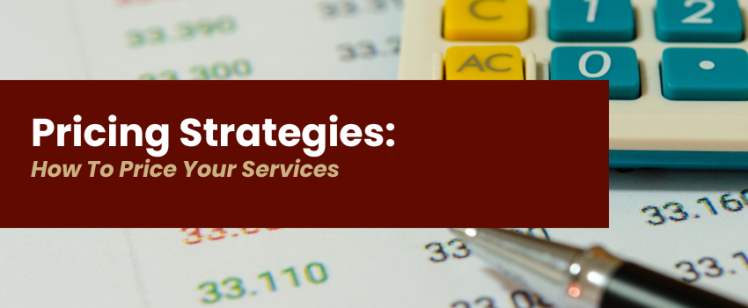-
Pricing Strategies: How To Price Your Services
Have you reviewed your profit and loss statement, only to find a loss that leaves you feeling frustrated? Once you do another look over, you need to find out why. One place that entrepreneurs sometimes forget to look is at pricing. If your service is not priced right, you will not be profitable, no matter how much you increase sales.
Determining the right pricing for services can be challenging, but there are several strategies entrepreneurs can employ to ensure they are charging appropriately and generating sufficient profit. BUT the most important part of this process is that you have a profit after all we did start our business to make money.
Here are some guidelines and considerations:
Start with Cost-Based Pricing
- Calculate all costs associated with delivering the service, including direct costs (materials, labor) and indirect costs (overhead, administrative expenses).
- Add a desired profit margin to cover business growth, risk, and a return on investment.
- This method ensures that the price covers all expenses and provides a profit.
- Remember to account for hidden costs when setting your pricing, taking into consideration all facets of your business such as marketing, customer support, and ongoing service enhancements.
Next: Use Profit Margin as a Guide
- Aim for a profit margin that allows for business sustainability, growth, and reinvestment.
- The desired profit margin can vary by industry, and you can google that information. Software subscriptions can be as high as 50%, supermarkets are typically 1-2%, as are liquor stores.
Next: Look at Value-Based Pricing
Assess the value your service brings to clients. Consider the benefits, outcomes, and competitive advantages your service provides.
- Are you experts in the industry?
- What difference will your services make to the client and their profit margin?
- Are you providing something unique?
A perfect example of this is art – if you based it on all the other pricing factors, you would be setting prices for far less than the value of it. Another example is when you are an expert in the industry or you have a proven track record of success. Your knowledge, derived from years of experience, should not be confined to an hourly rate – which fails to encompass the education and training you’ve undertaken – but rather should be reflected through value-based pricing.
- Set prices based on the perceived value to the customer rather than just the cost of production.
- This approach can result in higher prices if your service is perceived as highly valuable.
- Understanding the perceived value of your service from the customer’s perspective can lead to customer satisfaction and loyalty.
Review Regularly
Regularly review and adjust your pricing strategy to account for changes in costs, market conditions, or the perceived value of your services.
- Set a standard from the beginning when you create your pricing strategy.
- Let clients know that each year your prices will increase and let them know the range of increase. Will it be 5% or the rate of inflation – some years it was 0%, Are you ok with that? Or you can link it to their success if your services directly affect that. For example, if sales increase 25% our service fees will increase 2.5%.
Remember that the right pricing strategy can vary based on industry, target market, and the unique value proposition of your services. It’s essential to strike a balance between covering costs, staying competitive, and providing value to customers. Regularly reassess your pricing strategy to ensure it aligns with your business goals and market dynamics.
Comments are closed.
- (609) 759-5881
- Contact us
